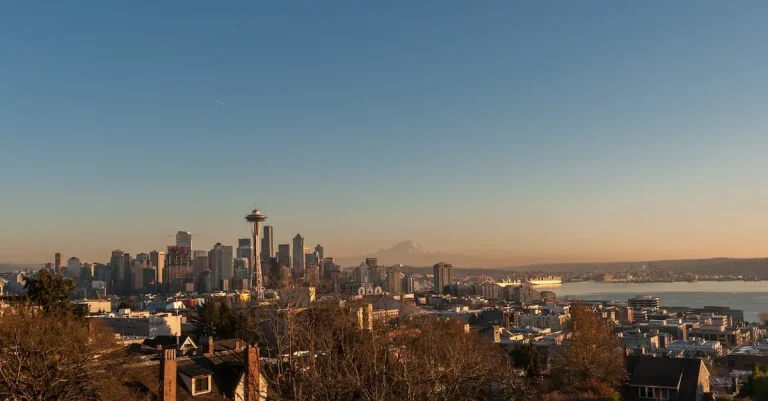California Car Inspection Requirements For Out-Of-State Vehicles
Moving to California with an out-of-state vehicle? You’ll need to get it inspected and registered in California within 20 days. This guide covers everything you need to know about meeting California’s strict emission standards and smog check requirements for importing vehicles.
If you’re short on time, here’s a quick answer: All vehicles new to California must get a smog inspection within 90 days and have any necessary repairs done before registration. Out-of-state vehicles over 7 years old will also need a visual inspection. Expect costs of $50-150 for inspections plus any repair expenses.
In this comprehensive guide, we’ll cover the step-by-step process for registering an out-of-state vehicle in California, including:
California Smog Check Requirements
All vehicles must pass smog check
In California, all vehicles are required to pass a smog check before they can be registered. This includes out-of-state vehicles that are being brought into California. The smog check is an important part of the state’s efforts to reduce air pollution and ensure that vehicles on the road are meeting emissions standards.
During the smog check, the vehicle’s emissions are tested to make sure they are within acceptable limits. If a vehicle fails the smog check, it will need to be repaired and retested until it passes.
Exemptions for new and hybrid vehicles
While all vehicles are required to pass a smog check, there are some exemptions for certain vehicles. New vehicles that are less than six years old are exempt from the smog check requirement. Additionally, hybrid vehicles that are less than eight years old are also exempt.
These exemptions are in place because newer vehicles and hybrid vehicles tend to have lower emissions and are less likely to contribute to air pollution.
Smog check fees
There is a fee associated with the smog check in California. The fee varies depending on the type of vehicle and the county in which the smog check is performed. On average, the fee ranges from $30 to $80.
This fee helps cover the cost of administering the smog check program and ensuring that vehicles on the road are meeting emissions standards. It is important to note that the fee is separate from any repairs that may be needed if a vehicle fails the smog check.
For more information on California’s smog check requirements, you can visit the official website of the California Department of Motor Vehicles: https://www.dmv.ca.gov/portal/dmv/detail/vr/smogfaq
Visual and Mechanical Inspections
Requirements for vehicles over 7 years old
If you are bringing an out-of-state vehicle to California that is over 7 years old, it will need to undergo a visual and mechanical inspection. This requirement ensures that the vehicle meets the state’s safety and emissions standards.
It is important to note that this requirement applies to both private vehicles and commercial vehicles.
The purpose of this inspection is to verify that the vehicle is in good working condition and complies with California’s strict environmental regulations. This is especially important for older vehicles, as they may have worn-out parts or emit higher levels of pollutants.
The inspection must be conducted at a licensed California Inspection Station, which can be found throughout the state. These stations are authorized to perform the necessary inspections and issue the required certificates.
The cost of the inspection will vary depending on the location and the type of vehicle being inspected. It is recommended to contact the inspection station beforehand to inquire about the specific fees and requirements.
Items checked in visual inspection
During the visual inspection, the inspector will thoroughly examine the vehicle to ensure that it meets the state’s safety and emissions standards. Some of the key items that are typically checked during this inspection include:
- Exterior lights, including headlights, taillights, and turn signals
- Windshield and windows, including any cracks or damage
- Brake lights and indicators
- Tires, including tread depth and condition
- License plates and registration stickers
- Seat belts and child safety restraints
- Exhaust system, including emissions control devices
- Vehicle identification number (VIN) and registration documentation
The inspector will thoroughly examine these items to ensure that they are in proper working condition and comply with the state’s requirements. If any issues are found, the vehicle may need to undergo repairs or modifications before it can pass the inspection.
Purpose and cost of visual inspection
The purpose of the visual inspection is to verify that the vehicle meets California’s safety and emissions standards. By conducting this inspection, the state aims to ensure that vehicles on its roads are safe and environmentally friendly.
The cost of the visual inspection will vary depending on the location and the type of vehicle being inspected. It is important to note that this cost is separate from any repairs or modifications that may be required to bring the vehicle up to the state’s standards.
For more information about California’s car inspection requirements for out-of-state vehicles, you can visit the official website of the California Department of Motor Vehicles: www.dmv.ca.gov/portal/vehicle-registration/registration-out-of-state-vehicles/.
Registering an Out-of-State Vehicle in California
When moving to California from another state, it is important to follow the necessary steps to register your out-of-state vehicle. Registering your vehicle within 20 days of establishing residency is a requirement set by the California Department of Motor Vehicles (DMV).
Failing to do so may result in penalties and fines.
Register vehicle within 20 days of establishing residency
Upon becoming a California resident, you must register your out-of-state vehicle within 20 days. This applies to both new and used vehicles. To register your vehicle, you will need to visit a local DMV office and provide the necessary documentation.
Documents needed for registration
When registering an out-of-state vehicle in California, you will need to provide certain documents to the DMV. These documents typically include:
- Proof of ownership: This can be the vehicle title or a lease agreement if the vehicle is leased.
- Proof of insurance: You will need to show proof of valid auto insurance coverage.
- Out-of-state registration: Bring the current out-of-state registration certificate.
- Valid identification: Provide a valid California driver’s license or ID card.
- Smog certification: Depending on the vehicle’s age and type, a smog certification may be required.
It is important to check the DMV website or contact your local DMV office for the most up-to-date and specific requirements.
CARB inspection and clearance for 1996+ vehicles
If your out-of-state vehicle is a 1996 model year or newer, it will need to undergo a California Air Resources Board (CARB) inspection. This inspection is aimed at ensuring that the vehicle meets California’s strict emissions standards.
Once the vehicle passes the CARB inspection, it will receive a clearance certificate, allowing it to be registered in California.
The CARB inspection can be done at various certified smog check stations throughout the state. The cost of the inspection may vary, so it is advisable to contact the smog check station in advance for pricing information.
Estimated registration and title fees
When registering an out-of-state vehicle in California, you will be required to pay registration and title fees. These fees vary depending on factors such as the vehicle’s value, weight, and year. To get an estimate of the fees, you can use the DMV’s online fee calculator on their official website.
It is worth noting that registration fees in California are generally higher compared to other states, due to various factors such as the state’s strict emissions standards.
For more information on registering an out-of-state vehicle in California, you can visit the official California DMV website at www.dmv.ca.gov.
Emission Repairs and Waivers
Repair cost limit for emissions fixes
When it comes to emission repairs for out-of-state vehicles in California, there is a limit to how much you can spend on fixing the emissions-related issues. The California Department of Consumer Affairs has set a repair cost limit that you need to be aware of.
This limit ensures that vehicle owners don’t end up spending excessive amounts on emission repairs.
If the cost of repairing the emissions-related problem exceeds this limit, you may need to explore other options such as applying for a repair cost waiver.
Apply for repair cost waiver if limit exceeded
If the cost of repairing the emissions-related problem on your out-of-state vehicle exceeds the repair cost limit set by the California Department of Consumer Affairs, you can apply for a repair cost waiver.
This waiver allows you to seek alternative solutions instead of spending a significant amount on emissions fixes.
The California Air Resources Board (CARB) offers a process for applying for a repair cost waiver. You can find the necessary forms and information on their official website at www.arb.ca.gov. The waiver application will require you to provide details about your vehicle, the emissions-related problem, and any previous repair attempts.
It’s important to note that the waiver application process can take some time, so it’s advisable to start it as soon as you realize that the repair cost will exceed the limit. This will ensure that you have ample time to explore other options if the waiver is denied.
Options if waiver is denied
If your repair cost waiver application is denied, there are still options available for you to comply with California’s emission requirements. One option is to seek out a certified emissions repair technician who can perform the necessary repairs at a lower cost.
Another option is to consider selling or trading in your out-of-state vehicle for a California-compliant vehicle that meets the state’s emission standards. This can be a more cost-effective solution in the long run, especially if your current vehicle requires extensive repairs.
Remember, it’s essential to comply with California’s emission requirements to ensure the health of both the environment and the public. By understanding the repair cost limit, applying for a repair cost waiver if necessary, and exploring alternative options, you can navigate the process of bringing your out-of-state vehicle into compliance with ease.
Penalties for Non-Compliance
Fines for late registration
Failure to comply with California car inspection requirements for out-of-state vehicles can result in various penalties. One common penalty is fines for late registration. If you fail to register your out-of-state vehicle within the designated time frame, you may be subject to fines that can range from a few hundred dollars to over a thousand dollars, depending on the duration of the delay.
These fines are imposed to ensure that all vehicles on California roads are properly registered and meet the necessary safety and emissions standards.
Consequences of failing smog check
Another potential penalty for non-compliance is the consequences of failing a smog check. In California, all vehicles are required to undergo regular smog checks to ensure that they meet the state’s emissions standards.
If your out-of-state vehicle fails the smog check, you will be required to make the necessary repairs or modifications to bring it into compliance. Failure to do so may result in the inability to register your vehicle or obtain a smog certificate, effectively rendering your vehicle unroadworthy in California.
Operating uninsured vehicle
Operating an uninsured vehicle is also a serious consequence of non-compliance with California car inspection requirements. In the state of California, all vehicles must carry minimum liability insurance coverage.
If you fail to obtain the required insurance coverage for your out-of-state vehicle, you may face severe penalties, including fines, license suspension, and even the impoundment of your vehicle. It is crucial to ensure that your vehicle is properly insured before driving it on California roads to avoid these potential consequences.
Conclusion
Moving a car to California takes advance planning. Give yourself plenty of time to get inspections done, complete any needed repairs, and register your vehicle properly in the state. With the right information and preparation, you can smoothly transition an out-of-state vehicle and pass California’s strict emission standards.
Following the step-by-step process outlined here will help avoid any penalties or fines. Don’t wait – start researching smog check and inspection station options right away. And be sure to confirm registration requirements with the CA DMV as laws are subject to change.








